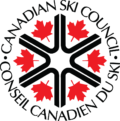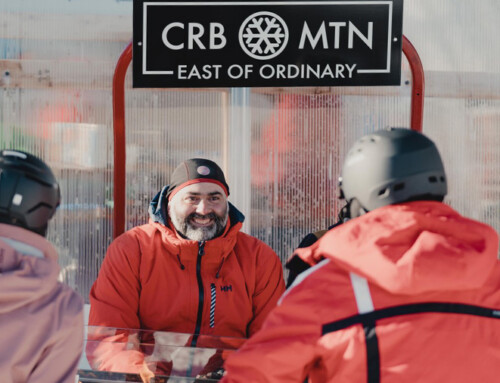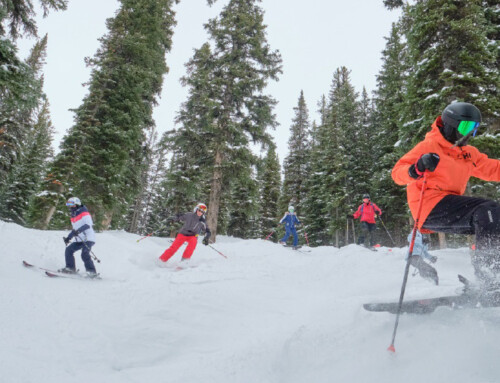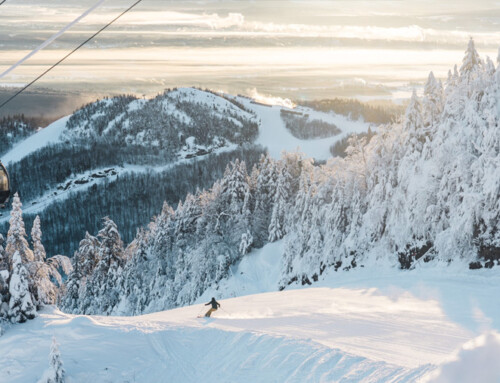Despite record snowfalls in many ski areas last season, snowmaking is generally on the increase around North America. With enhanced energy-efficient technology, resorts are expanding their human-made capability in order to counteract fluctuating precipitation and climate change and maintain the length of their season.
No-one has managed to match Mt Abram in Maine yet for sustainability – they installed over 800 solar panels in their parking lot and invested in energy-efficient snowguns, cutting their electrical footprint by 70 percent. However, resorts everywhere are making significant strides towards snowmaking sustainability.
Panorama, BC, for example, has invested over $1.5 million this season in upgrading its snowmaking technology, says CEO Steve Paccagnan. Improvements include a new pump station, added winch cats, and high tech snow guns. Ironically, great natural snowfall since October has meant that Panorama could stop snowmaking three weeks early on January 26.
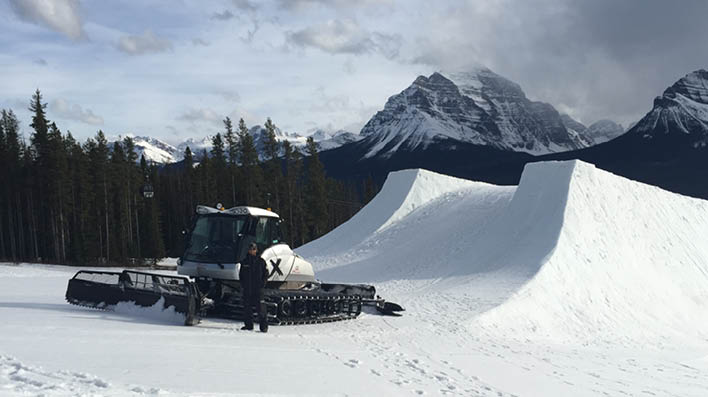
Paccagnan’s Slopes Manager is Bryan Kroker who came to the BC Powder Highway resort in Aug 2016 from Lake Louise after a long snowmaking career which started in Nakiska in 2004 and included six seasons in Australia. “I can definitively say now we are on the cutting edge of snowmaking technology,” says Kroker. Unlike previous snowmaking generations when much electricity was wasted on undesirable manmade snow, it’s all about efficiency and producing a higher quality snow faster these days. “It used to be a brute force industry, with really high-pressure air and really high-pressure water,” Kroker explains. “You might get 30 percent that landed as snow, 30 percent as slush and the rest water.” For the resort the efficiency side of the new technology is prime but the by-product is better snow, he says: “Snow can now be made when it is minus 1.5 wet bulb, the ambient air temperature factoring in humidity too.” As well as operating at a wider range of temperatures, snow guns are now able to produce purer snow quicker. “This allows us to fire up the guns around October 20 and open up the resort early November,” says Kroker.
So, higher quality snow is all about the water content. “It has less water, it is dense snow with good durability,” Kroker describes. “We are looking for snow that is resilient to temperature but still pleasing to the guest and that doesn’t have to be ice.” Integral to making a skiable slope is having a good base but slope preparation is also key. “We work on pushing snowmaking around, moving snow to make an adequate depth all over, and then we grade it. We have to get all the air out of it to make it consistent. We then till it with a snowcat two to three times before the guests even get to it.” During the off-season Kroker and his snowmaking team work on every snowmaking gun in their altitude arsenal: “We have hundreds of guns and every single one goes through rigorous testing.”
Having prepped the slopes and opened to the public, the season-long job for the 30-strong snowmaking team is to keep the snow as good as possible – Kroker is an ardent snowboarder himself and has high standards for piste perfection. This is where winch cats come into play – with 10 ft long winch anchors and heavy cables attached, which are buried in the ground during the summer (Panorama has 125 of them). “We are far more efficient at putting snow back where it needs to go now we have winch cats. They enable us to work on a thinner snowpack and on a steeper gradient,” Kroker explains. “We use them for anything, they can move more snow with better traction. If we are hooked up with a winch cat we don’t have to worry about sliding – every time a snowcat slides it is moving the snow base. So, when there is no drag, the snow stays exactly where you put it.”
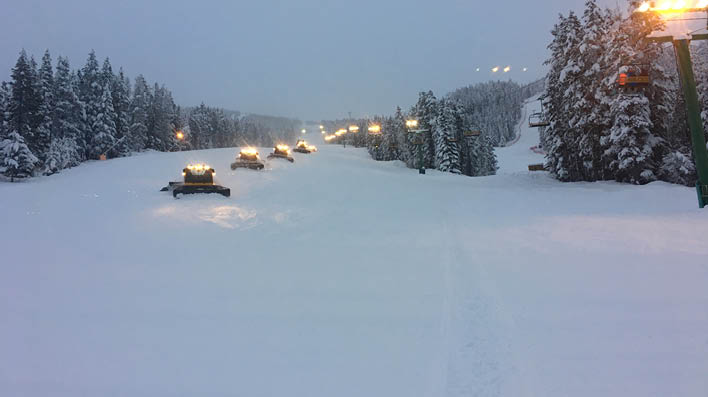
Working with the leading snowcat manufacturer, Prinoth, Kroker demos new products as they are released. He says that winch technology has been around for around three decades but has been refined in the past ten years. “It went from being a necessary evil for steep slopes to now when we’ve realized the efficiency side. Even on a beginner run like Horseshoe, we will put a winch on it to make it better for the guests,” he says.
With snowmaking capacity over 40 percent of Panorama’s named runs, Kroker is always on the lookout for what’s next in snowmaking: “Steve is an absolute big picture guy and he wants me to go find what is the next best thing for Panorama.”
Efficiency is the buzzword and it is being facilitated by automation. “Our water hydrants adjust themselves according to temperature. If we want really good quality, we don’t waste water making snow too dry or too wet. This is relatively new here in Canada in the last decade and has really taken off in the past five years – we’re on the cutting edge of automation. As far as energy saving, we finished three weeks earlier than last year.”
Electricity is always an eco issue – both eco in terms of economic and in terms of ecological. “The largest consumption of electricity in snowmaking is compressed air,” says Kroker. “The majority of energy it takes to compress air turns into heat. So, how do we reduce that cost? We pursue gun technology that doesn’t require as much compressed air. What used to take 100-150 cubic feet of air is now down to 30-50 so we have reduced our consumption by 50-75 % per year. A lot of resorts are doing that now.”
Although investment costs are higher with automated technology, there’s a huge longterm saving in labour, says Kroker. And the higher quality snow made at a wider range of temperatures is future-proofing Panorama against potential problems of climate change.
